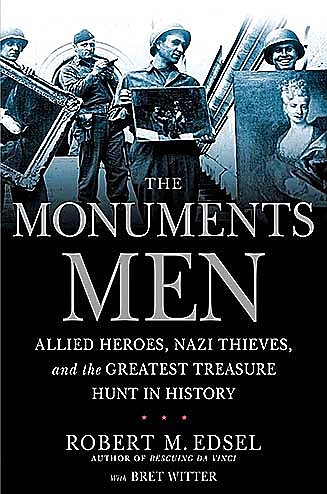Robert M. Edsel was astonished that almost 70 years after World War II, a major part of the war and a group of heroes were unknown to the general public.
"I thought that was wrong. I felt these men and women should be honored by our nation," says the author of the nonfiction book "The Monuments Men: Allied Heroes, Nazi Thieves and the Greatest Treasure Hunt in History."
FAQ
‘The Rape of Europa’
WHEN — 6 p.m. Wednesday
WHERE — Great Hall at Crystal Bridges Museum of American Art in Bentonville
COST — Free with registration
INFO — crystalbridges.org
The "Monuments Men" were men -- and women -- who had established careers such as museum directors, curators or art historians. They had every reason not to volunteer for military service during World War II, but "they felt they had an important contribution to make," Edsel says. They volunteered to be part of the Monuments, Fine Arts and Archives section. President Franklin D. Roosevelt approved the idea that these people would be cultural preservation officers and work with Allied air commanders to steer Allied bombings away from cultural targets. In the last few months of the war, they became art detectives trying to track down and ultimately locating some 5 million cultural objects, which were returned to the countries from which they had been stolen, Edsel says.
In 1996, Edsel was living in Italy and started to wonder how great works of art survived the war and who saved them. He didn't know the answer and had a hard time finding it, he recalls. That was the beginning of his focus on the subject, and he decided to create the Monuments Men Foundation for the Preservation of Art in 2007, which not only honored their legacy but also continues to find the works of art still missing. He notes why he then decided to write a book on the "Monuments Men."
"I thought it was the most exciting story that I've ever heard, and I still feel that way," he says.
Edsel's 2009 book covers the story of seven of these men and one woman up until the end of the war in Europe, excluding Italy. Two of the most prominent items stolen that he discusses in the book are Michelangelo's Bruges Madonna and the Ghent Altarpiece. Bruges Madonna, which was the only sculpture to leave Italy during Michelangelo's lifetime, was stolen by the Nazis from Bruges, Belgium, in September 1944, Edsel says. The Ghent Altarpiece was also stolen by the Nazis, and both pieces became key parts of the "Monuments Men" search. Both items were found in a salt mine in Altaussee, Austria, along with about 7,000 stolen paintings and other objects, he says.
This was not the treasure trove, he says. "There were almost 2,000 different hiding places in Germany."
Edsel is also the author of "Rescuing Da Vinci" and "Saving Italy: The Race to Rescue a Nation's Treasures from the Nazis" and a co-producer of the documentary film "The Rape of Europa." He will speak about the "Monuments Men" at a sold-out lecture March 7 at Crystal Bridges Museum of American Art, and "The Rape of Europa" will be shown Wednesday at the museum. The documentary tells the story of the "systematic theft, deliberate destruction and miraculous survival of Europe's art treasures" during the Third Reich and World War II, according to the museum website. Admission to the documentary is free, but tickets are required. Edsel says he hopes to be present at the documentary screening.
"The Monuments Men" was also recently made into a film directed by George Clooney and released in theaters Feb. 7. The film stars Clooney, Matt Damon, John Goodman, Bill Murray, Cate Blanchett, Jean Dujardin, Hugh Bonneville and Bob Balaban. Edsel was a consultant on the script and recently returned to the United States from promoting the film overseas and attending foreign premieres. He says getting a call from Clooney and Grant Heslov, who both wrote the screenplay, in late 2011 was a "pretty surprising and joyful moment," partly for him but more so for these men and women who never got the recognition, he says. The characters in the film have different names than the real people because some changes were made to the characters, he notes.
Of the eight people he detailed in his book, there are five "Monuments Men" still living. He has heard feedback from all of them about the film.
"They're all very, very excited about it -- very humbled by the efforts of these actors to tell their story."
NAN What's Up on 02/28/2014

